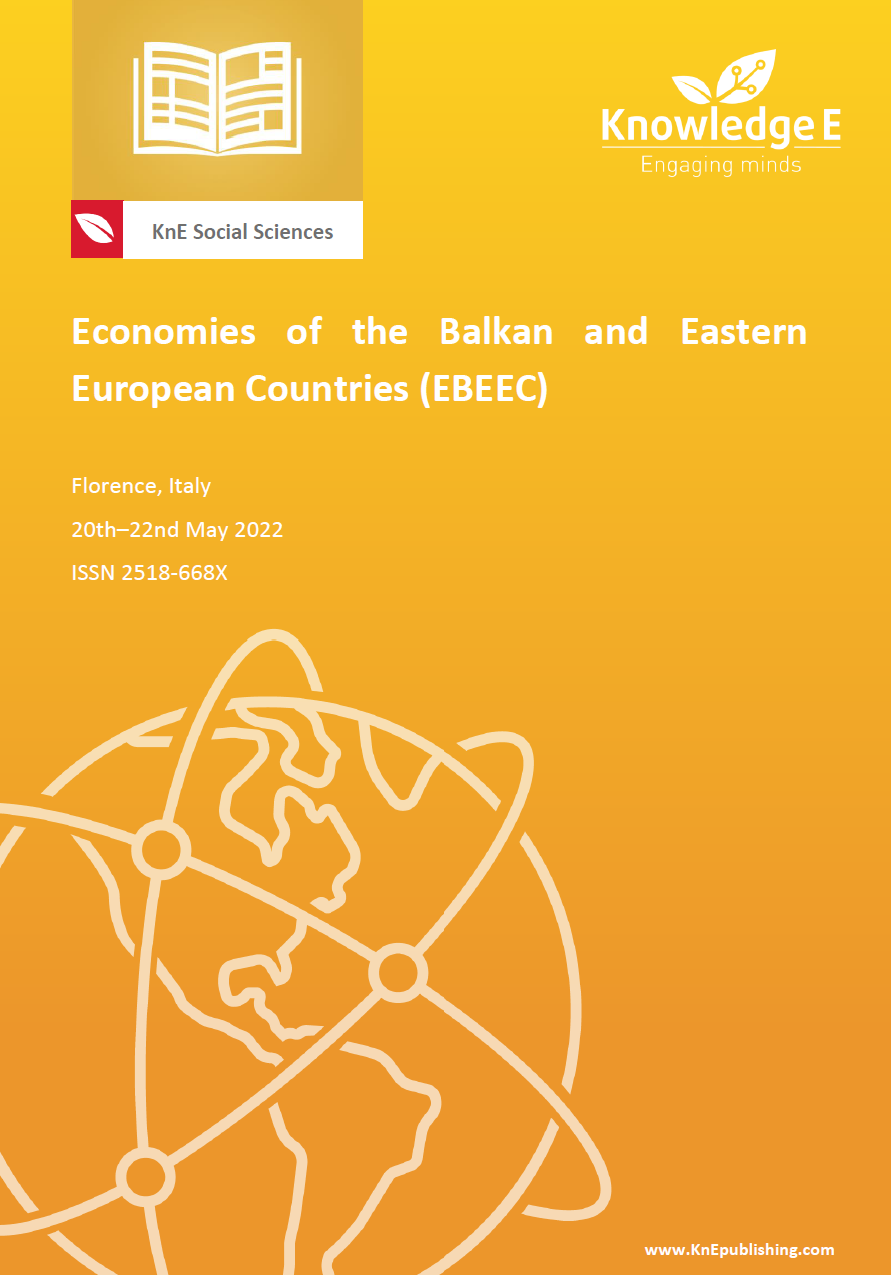Researching the impact of corruption and organized crime on FDI in Europe: a literature review
DOI:
https://doi.org/10.18502/kss.v8i1.12631Abstract
Eastern European societies and their economies have experienced specific and/or asymmetrical developments over the last 70 years. The political regime changes at the end of the 80s led these countries on the path of market economy and opened the doors for foreign investors’ presence, as privatizations of previously state-owned companies were considered beneficial for economic progress. Starting in the mid-90s and more so after the association of countries in the region to the European Union and NATO, foreign investors found interesting opportunities as greenfield projects or partnerships with local entities. However, the presence of foreign direct investments (FDI) in Eastern Europe was uneven across countries and regions, which may be due to a certain extent to corruption and organized crime groups. This paper aims to conduct a systematic review of the literature that has focused on analyzing the influence of corruption and organized crime in attracting foreign direct investment using quantitative methods, focusing on empirical studies conducted in Europe since 2000. Our main purpose is to summarize the different research approaches, to offer a discussion and suggestions for future research, and to provide some relevant and justified answers to the following question: To what extent are corruption, organized crime, and FDI analyzed in European countries?
Keywords: foreign direct investments, organized crime, corruption, GDP, quantitative methods
References
[2] Daniele V, Marani U. Organized crime and foreign direct investment: The Italian case. Illicit Trade and the Global Economy. The MIT Press; 2008.
[3] Moher D, Liberati A, Tetzlaff J, Altman DG. Preferred reporting items for systematic reviews and meta-analyses: The PRISMA statement. Annals of Internal Medicine. 2009;151(4):264–269.
[4] United States Department of Justice. International organized crime. US Department of Justice; 2008. Available from: https://www.justice.gov/criminal-ocgs/internationalorganized- crime
[5] Paoli L. ed. The Oxford handbook of organized crime. Oxford Handbooks; 2014.
[6] Govindan K, Rajendran S, Sarkis J, Murugesan P. Multi-criteria decision making approaches for green supplier evaluation and selection: a literature review. Journal of Cleaner Production. 2015;98:66–83.
[7] E-nformation. Thomson Reuters – Web of Science. n.d. Available from: https://www.enformation. ro/resurse/thomson-reuters-web-of-science
[8] Clarivate. Introducing the Journal Citation Indicator. A new approach to measure the citation impact of journals in the Web of Science Core Collection. 2021. Available from: https://clarivate.com/wp-content/uploads/dlm_uploads/2021/05/Journal- Citation-Indicator-discussion-paper.pdf
[9] Clarivate InCites Help. Journal Impact Factor ( JIF). 2021. Available from: https://incites.help.clarivate.com/Content/Indicators-Handbook/ih-journal-impactfactor. htm
[10] Pajunen K. Institutions and inflows of foreign direct investment: A fuzzy-set analysis. Journal of International Business Studies. 2008;39(4):652–669.
[11] Abid M. Does economic, financial and institutional developments matter for environmental quality? A comparative analysis of EU and MEA countries. Journal of Environmental Management. 2017;188:183–194.
[12] Du J, Lu Y, Tao Z. FDI location choice: Agglomeration vs institutions. International Journal of Finance & Economics. 2008;13(1):92–107.
[13] Tintin C. The determinants of foreign direct investment inflows in the Central and Eastern European Countries: The importance of institutions. Communist and Post- Communist Studies. 2013;46(2):287–298.
[14] Ledyaeva S, Karhunen P, Kosonen R, Whalley J. Offshore foreign direct investment, capital round tripping, and corruption: Empirical analysis of Russian regions. Economic Geography. 2015;91(3):305–341.
[15] Jiménez A. Political risk as a determinant of Southern European FDI in neighboring developing countries. Emerging Markets Finance and Trade. 2011;47(4):59–74.
[16] Brada J, Drabek Z, Mendez JA, Perez MF. National levels of corruption and foreign direct investment. Journal of Comparative Economics. 2019;47(1):31–49.
[17] Bilan Y, Vasylieva T, Lyeonov S, Tiutiunyk I. Shadow economy and its impact on demand at the investment market of the country. Entrepreneurial Business and Economics Review. 2019;7(2).
[18] Doytch N, Eren M. Institutional determinants of sectoral FDI in Eastern European and Central Asian countries: The role of investment climate and democracy. Emerging Markets Finance and Trade. 2012;48(4):14–32.
[19] Lee M, Yin X, Lee S, Weng DH, Peng M. The impact of home country institutions on new venture export: Examining new ventures in transition economies. International Entrepreneurship and Management Journal. 2015;11(4):823–848.
[20] Kersan-Škabić I. Institutional development as a determinant of FDI attractiveness in Southeast Europe. Društvena istraživanja. 2013;22(2):215–235.
[21] Daniele V, Marani U. Organized crime, the quality of local institutions and FDI in Italy: A panel data analysis. European Journal of Political Economy. 2011;27(1):132–142.
[22] Simionescu M, Su W, Zhang D, Abrhám J, Yaroshevich N, Guseva V. Determinants of foreign direct investment in the Visegrad group countries after the EU enlargement. Technological and Economic Development of Economy. 2018;24(5):1955–1978.
[23] UNDP. User’s guide to measuring corruption and anti-corruption, 2015. UNDP Global Anti-corruption Initiative (GAIN); 2015. Available from: https://www.undp.org/publications/users-guide-measuring-corruption-andanticorruption
[24] Tüzüntürk S, İnam B, Giray F. Analyzing the relationship between foreign direct investment and privatization in the European Union Founder Nations by using panel data approach. Panoeconomicus. 2016;65(5):587–607.
[25] Epperly B, Lee T. Corruption and NGO sustainability: A panel study of post-communist states. VOLUNTAS: International Journal of Voluntary and Nonprofit Organizations. 2015;26(1):171–197.
[26] Desli E. The role of institutional and regulatory adjustments on Foreign Direct Investment in the European Union area. Managerial and Decision Economics. 2018;39(8):833–920.
[27] Tsanana E, Chapsa X, Katrakilidis C. Is growth corrupted or bureaucratic? Panel evidence from the enlarged EU. Applied Economics. 2016;48(33):3131–3147.
[28] Beck K. 2021. Drivers of structural convergence: Accounting for model uncertainty and reverse causality. Entrepreneurial Business and Economics Review. 2021;9(1):189–208.
[29] Lau CKM, Steve Y, Zhang Z, Leung KK. Determinants of innovative Activities: Evidence from Europe and Central Asia region. The Singapore Economic Review. 2015;60(01).

